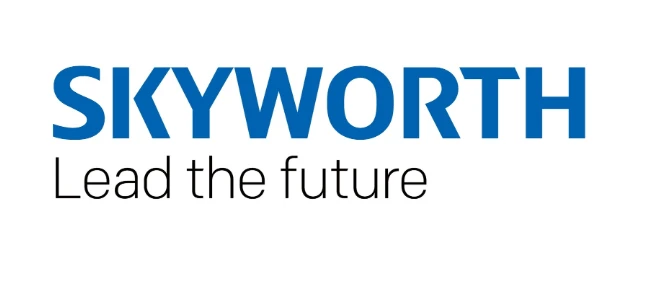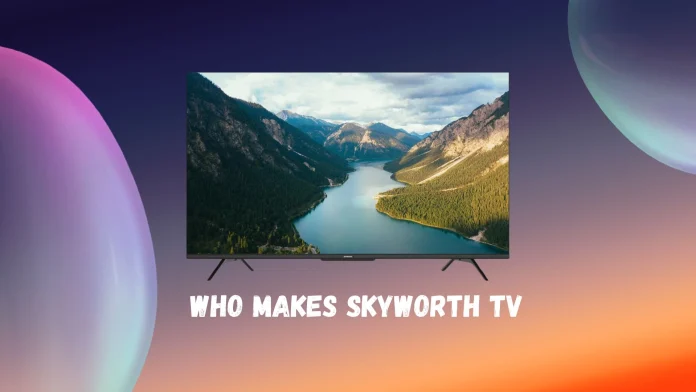Skyworth TV is a major player in the TV market from China, known for creating not only TVs but also set-top boxes that enhance your viewing experience, along with other home gadgets. Back in 2017, they branched out into the North American scene. While Skyworth operates several factories around the globe, the heart of its TV production is in China. That’s where they make most of their TVs before shipping them off to different corners of the world.
What sets Skyworth apart is how hands-on they are with their TV production. They own a few factories where they assemble TVs and make many key components. One of the standout parts they produce is the OLED panels. So, when watching a Skyworth TV, you’re experiencing their tech from the inside out.
Who manufactures Skyworth TV?
Skyworth takes on the role of an OEM or Original Equipment Manufacturer, which means they’re assembling TVs and making the components that go into them, like the screens. Most of their TV production and component manufacturing happens in China. They have some facilities in other countries where they take parts shipped from China and then put the TVs together in those local factories. But, it’s key to note that all these operations, no matter where they are, fall under Skyworth, the parent company based in China. This setup allows them to keep a tight grip on the quality and consistency of their products.

Skyworth ranks within the top 10 global TV manufacturers and frequently partners with other brands to produce TVs. In 2022, for instance, they secured a partnership with Veira Group to produce Android and Google TVs in India for them.
Where are Skyworth TV manufacturing facilities?
Skyworth’s main production hubs are nestled in China and Mongolia, with their corporate heart beating in the Nanshan High-tech Park of Shenzhen. Their manufacturing landscape spreads across various locations, from the New Guangming District in Shenzhen to the industrious Hohhot Economic Development Area in Inner Mongolia. They also have operations in Shiyan County’s flat display industrial park within Shenzhen’s Bao’an District and in the Guangzhou Economic and Technology Development Zone in Guangzhou. Complementing their manufacturing might are several logistical hubs strategically placed in Shuangliu, Chengdu; Yichun, Jiangxi; and Lishui, Nanjing.
Beyond China’s borders, Skyworth has established assembly footholds in South Africa, Poland, Indonesia, and Argentina, adapting to regional demands and market nuances. These international sites primarily focus on assembling TVs, relying on components shipped from China. Skyworth TVs arrive fully assembled from China in the US market, with a dedicated US-based company overseeing the distribution. This US entity is tasked with getting Skyworth TVs into consumers’ hands and homes, although it doesn’t engage in the manufacturing side of the operations.
Where can you buy Skyworth TV?
Skyworth TVs have made their mark worldwide, with availability extending to the USA, Canada, and beyond. Initially available through online platforms like eBay and Amazon, Skyworth expanded its reach in 2020, making its products available in major retail outlets, including Walmart. For those looking to purchase directly, Skyworth’s website offers a selection of models and provides a helpful tool to locate the nearest retail partner stocking Skyworth TVs.
The brand’s global presence doesn’t stop in North America; Skyworth TVs are also found in European, South African, Asian, and Latin American markets. However, the availability of specific models varies by region, with certain TVs being exclusive to particular countries, such as China or South Africa
Is Skyworth USA an American company?
Regarding Skyworth USA, it functions as a branch of the larger Skyworth group, specifically established to cater to the American market. Founded in 2017 and headquartered in California, Skyworth USA operates on American soil and is technically an American entity. Nonetheless, it remains under the management and ownership of its Chinese parent company, Skyworth, positioning it as an extension of the Chinese brand within the United States.
What are Skyworth’s sub-brands?
Skyworth has expanded its portfolio by acquiring two sub-brands, METZ and COOCAA, each with its unique market focus. METZ, originally a German consumer electronics brand, became part of Skyworth in 2015 when Skyworth acquired its TV production division. Since the acquisition, Skyworth has continued to market TVs in Europe under the METZ brand, maintaining its German heritage and reputation for quality.
In addition to METZ, Skyworth introduced the COOCAA brand in 2006, which has also entered the European market. The METZ company, under Skyworth’s umbrella, is now responsible for producing TVs with the COOCAA branding. This includes overseeing the distribution, production, and sales aspects of COOCAA-branded European TVs, further diversifying Skyworth’s presence and offerings in the international electronics market.
Is Skyworth a good brand of TV?
Skyworth positions itself as a cost-effective yet high-quality option among Chinese electronics brands. The company manufactures its own panels for its TVs. This in-house production not only cuts down on costs but also gives Skyworth complete oversight of the manufacturing process, contributing to the overall quality of its products. In various tests, Skyworth TVs have shown commendable performance concerning black levels, brightness, and pixel density, showcasing the efficacy of their approach.
Despite these strengths, Skyworth TVs are not without their issues. Users have reported glitches in the system’s operation, subpar HDR performance, and less-than-ideal sound quality. While Skyworth addresses many of these concerns in its high-end models, those enhancements come with a steep increase in price.
Comparatively, Skyworth holds its ground well against other Chinese brands, emerging as a top contender. However, when pitted against industry powerhouses like LG or Samsung, Skyworth TVs don’t quite match up in quality. But it’s essential to consider the price point; LG and Samsung’s offerings are typically at a much higher price range. Therefore, for consumers looking for a balance between cost and quality, Skyworth offers compelling value.





